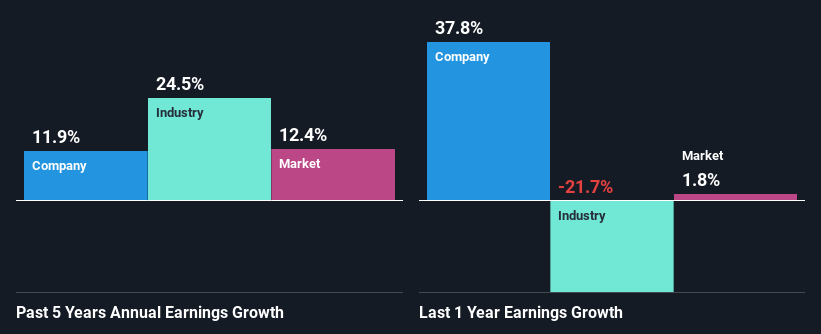Is Weakness In Leong Hup International Berhad (KLSE:LHI) Stock A Sign That The Market Could be Wrong Given Its Strong Financial Prospects?
Leong Hup International Berhad (KLSE:LHI) has had a rough month with its share price down 5.0%. However, stock prices are usually driven by a company’s financial performance over the long term, which in this case looks quite promising. Specifically, we decided to study Leong Hup International Berhad's ROE in this article.
Return on equity or ROE is an important factor to be considered by a shareholder because it tells them how effectively their capital is being reinvested. In simpler terms, it measures the profitability of a company in relation to shareholder's equity.
Check out our latest analysis for Leong Hup International Berhad
How Do You Calculate Return On Equity?
Return on equity can be calculated by using the formula:
Return on Equity = Net Profit (from continuing operations) ÷ Shareholders' Equity
So, based on the above formula, the ROE for Leong Hup International Berhad is:
15% = RM430m ÷ RM3.0b (Based on the trailing twelve months to December 2023).
The 'return' refers to a company's earnings over the last year. Another way to think of that is that for every MYR1 worth of equity, the company was able to earn MYR0.15 in profit.
What Is The Relationship Between ROE And Earnings Growth?
Thus far, we have learned that ROE measures how efficiently a company is generating its profits. We now need to evaluate how much profit the company reinvests or "retains" for future growth which then gives us an idea about the growth potential of the company. Generally speaking, other things being equal, firms with a high return on equity and profit retention, have a higher growth rate than firms that don’t share these attributes.
Leong Hup International Berhad's Earnings Growth And 15% ROE
To begin with, Leong Hup International Berhad seems to have a respectable ROE. Further, the company's ROE compares quite favorably to the industry average of 7.4%. This certainly adds some context to Leong Hup International Berhad's decent 12% net income growth seen over the past five years.
Next, on comparing with the industry net income growth, we found that Leong Hup International Berhad's reported growth was lower than the industry growth of 25% over the last few years, which is not something we like to see.

Earnings growth is a huge factor in stock valuation. What investors need to determine next is if the expected earnings growth, or the lack of it, is already built into the share price. By doing so, they will have an idea if the stock is headed into clear blue waters or if swampy waters await. Is Leong Hup International Berhad fairly valued compared to other companies? These 3 valuation measures might help you decide.
Is Leong Hup International Berhad Efficiently Re-investing Its Profits?
Leong Hup International Berhad has a low three-year median payout ratio of 21%, meaning that the company retains the remaining 79% of its profits. This suggests that the management is reinvesting most of the profits to grow the business.
Moreover, Leong Hup International Berhad is determined to keep sharing its profits with shareholders which we infer from its long history of five years of paying a dividend. Our latest analyst data shows that the future payout ratio of the company is expected to rise to 29% over the next three years. Therefore, the expected rise in the payout ratio explains why the company's ROE is expected to decline to 11% over the same period.
Conclusion
Overall, we are quite pleased with Leong Hup International Berhad's performance. In particular, it's great to see that the company is investing heavily into its business and along with a high rate of return, that has resulted in a respectable growth in its earnings. Having said that, the company's earnings growth is expected to slow down, as forecasted in the current analyst estimates. To know more about the company's future earnings growth forecasts take a look at this free report on analyst forecasts for the company to find out more.
Have feedback on this article? Concerned about the content? Get in touch with us directly. Alternatively, email editorial-team (at) simplywallst.com.
This article by Simply Wall St is general in nature. We provide commentary based on historical data and analyst forecasts only using an unbiased methodology and our articles are not intended to be financial advice. It does not constitute a recommendation to buy or sell any stock, and does not take account of your objectives, or your financial situation. We aim to bring you long-term focused analysis driven by fundamental data. Note that our analysis may not factor in the latest price-sensitive company announcements or qualitative material. Simply Wall St has no position in any stocks mentioned.

 Yahoo Finance
Yahoo Finance 